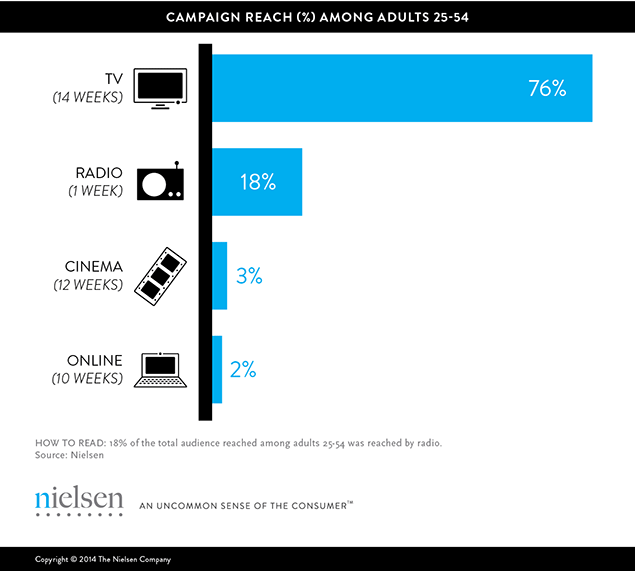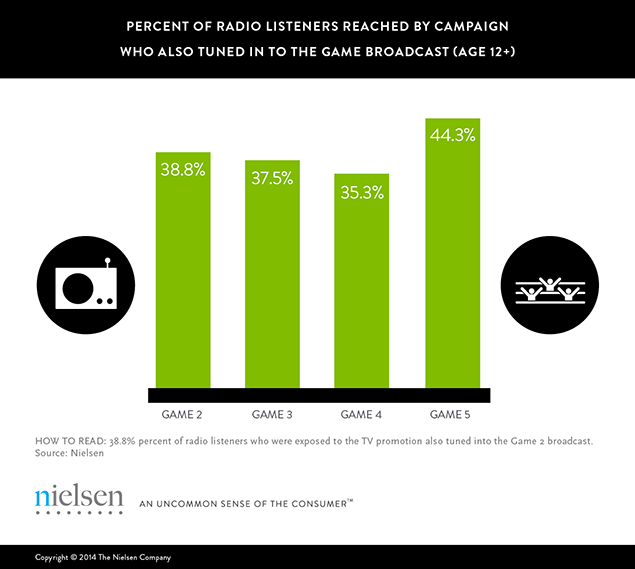In today’s evolving media landscape, television broadcasters are constantly searching for effective ways to promote their programming across platforms, including radio. And with the fall TV season finally here and the Major League Baseball playoffs right around the corner, there’s no shortage of high-profile content for them to showcase. So for broadcasters, now is a critical time to drum up enthusiasm and interest in upcoming programming—especially when there’s evidence that radio reach can boost TV tune-in.
New data from Nielsen illustrates that reaching radio listeners—TV viewers when they’re away from their televisions—can have a dramatic effect on viewership when the program airs.
We’ve known for some time that over-promoting an upcoming event on the same channel isn’t the best use of a TV network or station’s commercial inventory. We also know that advertising on a channel other than the one the event will air on (off-channel promotions) can be particularly helpful for new shows. That’s because more than half of the viewers who watch a premier have typically seen the promotional ads on other channels.
By using portable people meter (PPM) technology to capture radio and television exposure in major markets, broadcasters can assess who was exposed to a campaign on the radio and—most importantly—who also tuned into the broadcast.
These insights spotlight how radio is both effective as an advertising platform and an important player in the larger media mix when it comes to promoting scripted programming and sports events.
To illustrate, a major cable network maximized viewership for the premier of a new drama program by pre-promoting it across a mix of platforms: on-and off-channel TV ads, radio spots and several other platforms. This network kicked off the radio portion of the campaign just a few days before the premier, yet it still delivered the second-highest reach of the platforms in the mix.

Considering that radio reaches more than 90% of all Americans on a weekly basis, it’s clear it has the ability to reach a significant amount of consumers in a short period of time as well as maintain and increase the reach of an ad campaign even when a network reduces the on-air TV portion of the campaign and amplifies the radio campaign.
Furthermore, the data from several other studies shows that the conversion rates (the percent of listeners who heard the ad on the radio and tuned into the TV broadcast) for scripted shows across the days of a campaign tend to be similar—even in a short campaign. This means that a longer, multi-day radio ad campaign can deliver significant reach that builds consistently over time.
The same story holds true for sports programming: radio works well to create top-of-mind awareness on game day, but it can also effectively convert radio listeners into viewers over the course of a multiple-day event, like a seven-game MLB series.
Findings from several sports campaigns showed that promotions that aired in the time of day closest to the start of a primetime game drove the most tune-in, converting up to 50% of the listeners exposed to the ads into viewers.
The chart below highlights the consistent conversion rates during the most meaningful stretch of a major sports championship series earlier this year.

The marriage of audience data from TV and radio can be a big advantage for broadcasters looking to turn a group of engaged radio listeners into a group of engaged TV viewers.



